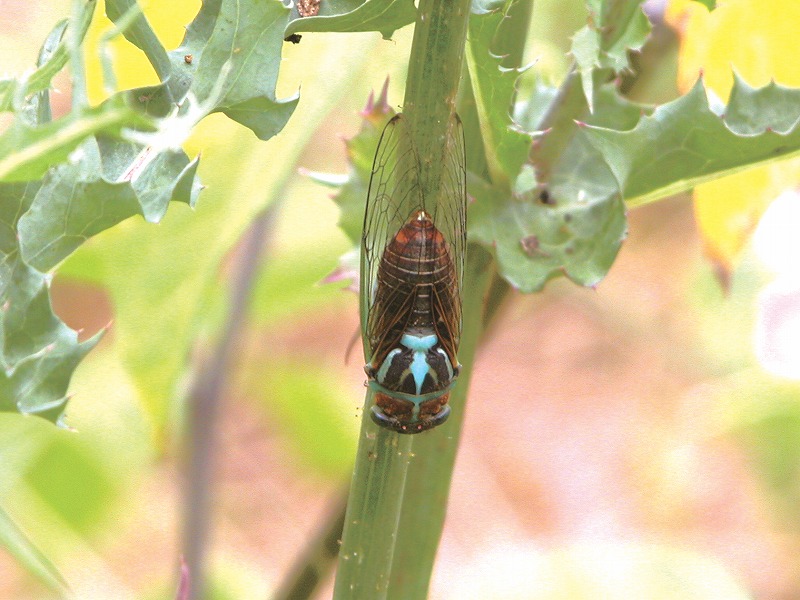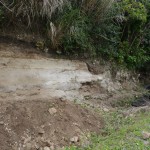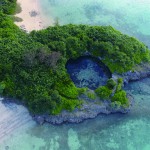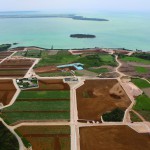【Designated by the City:Natural Monument (Fauna)】Tsumagurozemi (Nipponosemia teminalis)
The Tsumagurozemi are distributed in China, Taiwan, the Yaeyama islands, and Miyako (part of Sunagawa and Tomori of Gusukube, and part of Ueno), and Miyako Island is the northernmost habitat. Although they can only live on Isunoki, or yard trees, they are naturally distributed in Akagi (bishopwood), Ryukyu-gaki (coast persimmon), and Kuroyona trees in the Uipiyayama hill which is close to a natural forest. The Tsumagurozemi is named after small dark dots at a tip of the front wings.
In Sunagawa and Tomori of Gusukube, they are called “Nubisu-gara” or “Nusupi-gara.” Nubisu-gara is said to be derived from their rather small buzzing sound compared with other cicadas. “Nusupi-gara” seems to be named after Yusukigi trees, their only habitat.
The Tsumagurozemi appear in the rainy season from late May through late June. They stay on trees with their heads down, and their buzz sounds like “shee, shee.” They sing from around 5:30 in the morning until around 7:30 in the evening.
 宮古島アプリの綾道(あやんつ)トップページ
宮古島アプリの綾道(あやんつ)トップページ 宮古島アプリの綾道(あやんつ)の内容
宮古島アプリの綾道(あやんつ)の内容 宮古島の3つのルート
宮古島の3つのルート 宮古島市長のあいさつ
宮古島市長のあいさつ 宮古島文化遺産紹介
宮古島文化遺産紹介








